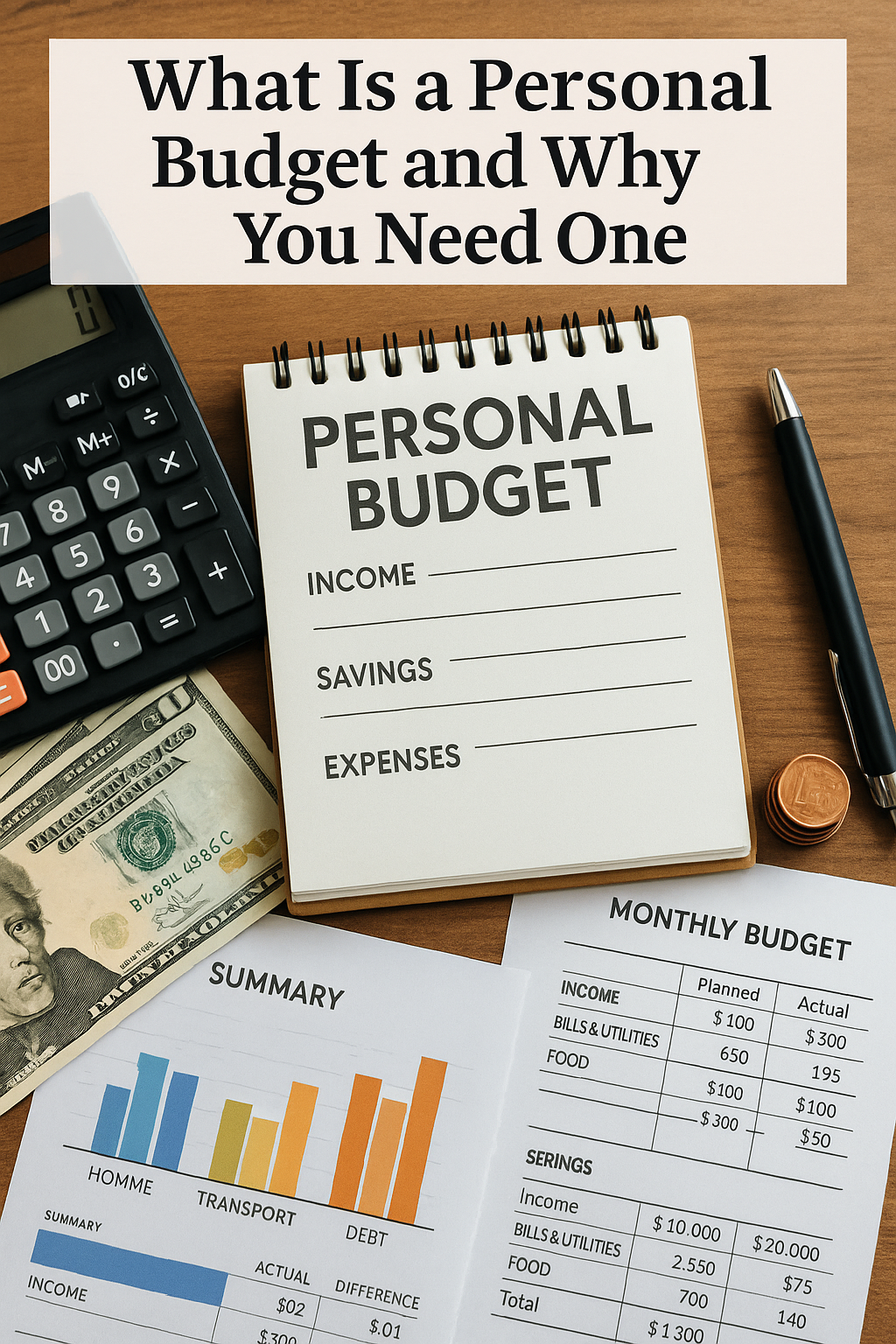A personal budget isn’t about restriction—it’s about freedom. It gives you control over your money, helps you make smarter decisions, and brings peace of mind knowing exactly where every dollar goes.
Whether you’re trying to pay off debt, save for a big goal, or simply stop living paycheck to paycheck, a budget is your best financial tool. In this article, you’ll learn what a personal budget is, why it matters, and how to create one that actually works.
What Is a Personal Budget?
A personal budget is a plan that outlines your income and expenses over a specific period—usually monthly. It shows you how much money you’re earning, spending, saving, and where it’s all going.
Think of it as a map that guides your financial decisions and keeps you from getting lost in overspending.
Why You Need a Personal Budget
Here’s what a good budget can do for you:
- Help you live within your means
- Prevent overdrafts and debt
- Make space for savings and emergencies
- Keep you on track toward financial goals
- Reduce stress and improve money confidence
Without a budget, it’s easy to waste money without realizing it.
Signs You Might Need a Budget
- You’re not sure where your money goes
- You live paycheck to paycheck
- You rely on credit cards to get through the month
- You have financial goals but aren’t making progress
- You feel anxious when checking your bank account
If any of these sound familiar, it’s time to build a budget.
Key Parts of a Personal Budget
1. Income
List all sources of money you receive monthly, after taxes.
Examples:
- Salary or wages
- Side hustle earnings
- Government assistance
- Freelance work
- Rental income
2. Fixed Expenses
These stay the same each month.
Examples:
- Rent or mortgage
- Insurance premiums
- Loan payments
- Subscriptions
3. Variable Expenses
These can change month to month.
Examples:
- Groceries
- Transportation
- Utility bills
- Entertainment
- Dining out
4. Savings and Debt Payments
This includes:
- Emergency fund contributions
- Retirement savings
- Extra debt repayments
- Investments
Different Budgeting Methods (Choose One That Works for You)
🧮 The 50/30/20 Rule
- 50% for needs
- 30% for wants
- 20% for savings and debt
🧾 Zero-Based Budgeting
Every dollar has a job. Income – Expenses = $0
🧧 Cash Envelope System
Use envelopes for categories like food, gas, or fun. When the envelope is empty, you stop spending.
📱 Digital Budgeting Tools
Apps like YNAB, Mint, or EveryDollar help automate and track your plan.
How to Create Your First Budget (Step-by-Step)
Step 1: Calculate your total monthly income
Use your paycheck stubs, bank deposits, or average freelance earnings.
Step 2: List all your monthly expenses
Break them into fixed and variable categories.
Step 3: Subtract expenses from income
If expenses are higher, look for areas to reduce (subscriptions, dining out, etc.).
Step 4: Assign money to savings and goals
Even saving $20/month is a win. Make it a habit.
Step 5: Track and adjust weekly
Use a journal, spreadsheet, or app to stay updated. Adjust if things change.
Common Budgeting Myths (And the Truth)
Myth: Budgets are restrictive.
Truth: Budgets give you permission to spend—intentionally.
Myth: I don’t make enough money to budget.
Truth: Budgeting is even more important with limited income.
Myth: It takes too much time.
Truth: 15–30 minutes a week can change your financial future.
Final Thoughts: A Budget Is a Form of Self-Respect
Creating a personal budget isn’t about depriving yourself—it’s about aligning your money with your values and goals. When you know where your money goes, you feel more in control and less stressed.
Start with a simple budget. Refine it as you go. And remember: a budget isn’t perfect—it’s a living plan that grows with you.


Sem comentários